Pariwisata
|
EMBUNG GURIOLA (Desa Raenyale - Kecamatan Sabu Barat)
Dibangun tahun 2014, sebagai bentuk keprihatinan Pemerintah Daerah dalam mewujudkan swasembada pangan. Dibangun menggunakan dana APBN TA 2014. Embung ini masih dalam tahap pengembangan sebagai objek wisata. |
|
|
BATU GONG (Desa Waduwela - Kecamatan Sabu Liae)
Batu ini memiliki keunikan yang mana bila dipukul mengeluarkan bunyi menyerupai gong dari berbagai ukuran. Batu ini telah dipagari dengan batu alam. |
|
|
BENTENG EGE (Desa Waduwalla - Kecamatan Sabu Liae)
Benteng ini merupakan peninggalan sejarah keberadaan Kolonial Belanda di Pulau Sabu. Benteng ini terbuat dari batu alam yang tingginya mencapai 2 meter. Ditengah-tengah benteng terdapat rumah adat bernama Tada Bara. |
|
|
Tambak Garam Ledeana (Desa Ledeana - Kec. Sabu Barat
Tambak garam ini menggunakan teknologi geomembran yakni membuat garam dengan bantuan panas matahari. Di lokasi ini sangat pas dikunjungi ketika sore hari menjelang matahari terbenam. |
In a Nutshell
Savu is located in the Lesser Sundas of eastern Indonesia (Nusa Tenggara Timur) half way between Sumba and Timor. The Savu archipelago includes Savu, Raijua and Dana and gave its name to the sea bordering Flores, Timor and Sumba. The Savu archipelago is part of the Savu Sea Marine National Park, whose aim is the protection and conservation of all types of marine mammals such as whales, dolphins, dugongs and turtles.
The Climate is dry for most part of the year. The rainy season from December to March brings irregular, but heavy rain and its share of floods near the coasts. Due to the scarcity of water the island produces few agricultural goods. It does allow one harvest of corn, mung beans, sorghum, tubers (cassava, taro), and cucurbitaceae (gourds, pumpkin, cucumber). Wet rice is restricted to the fewareas of the island which can be irrigated.
During the six to nine months of the dry season all river beds are dry and water supply is a main concern in the archipelago. The dry season is known here asawe menganga (musim lapar, B.I.), the hungry season. The sap the lontar palm tree provides an essential source of nutrition
Savu has numerous white sandy beaches, protected by reefs. Some beaches played a role in history like the beach between the harbour of Seba and the walled village of Bodo; it served as a landing place for Captain James Cook and his crew in 1770.
The beach of Uba Ae in Mesara hosts the most important ceremony of the year, kowa hole, where a ceremonial boat is launched out to sea.
Uba Ae in Mesara, as well as beaches of Raijua, is visited by surfers.
Gathering of sea food on reefs, small scale fishing activities, gathering of sea salt, sea weeds farming. Sea salt gathering using large shells or lontar containers has been a traditional activity on Savu and Raijua. In the last fifteen years seaweed farming has developed along the west and southeast coasts, bringing a new source of revenue to those living near the beaches.
Things to DO at Sabu Raijua
-
-
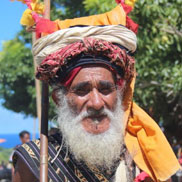
Wisata Alam
Sabu Raijua memiliki Objek Wisata Alam yang mempesona yang terletak di beberapa titikdestinasi salah satunya adalah Wisata alam Kelabba Madja Di Kec. Hawu Mehara
-
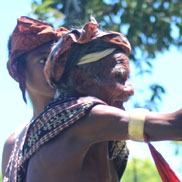
Wisata Bahari
Wisata Bahari Sabu Raijua memiliki karateristik Pantai dengan pasir berwarna putih
-
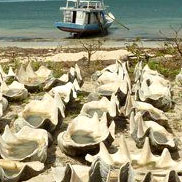
Wisata Budaya
Sabu Raijua memiliki obyek wisata budaya yang unik dan menarik seperti perkampungan adat megalitik, dan ritual adat yang dapat menarik perhatian wisatawan baik domestik maupun manc ...
-
-
-
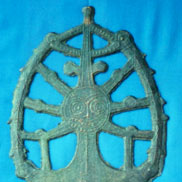
Wisata Buatan
The megaliths of Savu are natural wonders. They are not burial places, but physical time markers. They were dragged to ritual places from various parts of the island.
-
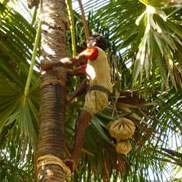
Kalender Adat
Each domain of Savu has its own ritual calendar (kalender adat or kew�hu rai, the knots of the land) as well as a specific number for calculating the day of a ritual in the lunar ...
-
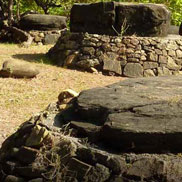
Upacara Adat
A village of origin or rae kepue is (or was) fenced, has a number of houses of the type èmu rukoko, a ritual place and sacred stones
-
-
-
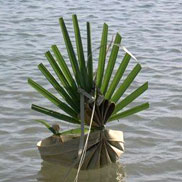
Tarian Tradisional
Ceremonies of the adat calendar are linked to the traditional religion Jingi tiu. They are held for the well-being of the population, for connecting people with their ancestors
-
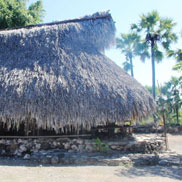
Agama Suku
Traditional houses on Savu bear witness to a rich historical and cultural legacy. Today they still can be seen in all parts of the island, fulfilling their purpose as identity mark ...
-
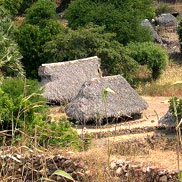
Tenunan
The lontar palm tree has been for centuries the tree of life for the Savunese who drink its sap during the dry season. Every part of the tree is used in everyday life and for cerem ...
-
-
-

